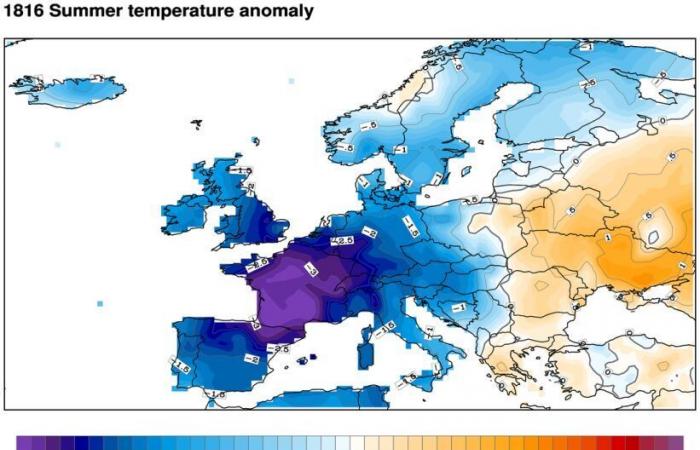
The year without Summer would not be new, it really existed! What if it happens again? Let’s see what this means first.
Also known as the Year of Poverty, it was 1816, year during which severe summer weather anomalies destroyed crops in northern Europe, the northeastern American states and eastern Canada.
Today it is believed that those climatic aberrations were caused by the volcanic eruption of Tambora, on the island of Sumbawa in present-day Indonesia, which occurred from 5 to 15 April 1815, an eruption which released large quantities of volcanic ash into the upper layers of the atmosphere. As is common following large volcanic eruptions, global temperatures dropped as sunlight struggled to pass through the atmosphere.
Two other important phenomena overlapped with this in that period: the Dalton Minimum, during which it is believed that the Sun emitted less energy, and the so-called Little Ice Age (still ongoing at the time), or a phase of general cooling of the Planet which, from the Middle Ages, lasted until 1850.
Don’t worry, there are no volcanic eruptions taking place, the sun still works well and we are obviously not in an ice age!
But be careful: it has been raining almost every day for days, especially in the North and after a brief heat wave the cool weather has returned! But what is happening at a hemispheric level? And above all: will there also be consequences for next summer? To understand what to expect we must, as usual, analyze the seasonal forecasts which offer us an overview of the precipitation and temperatures expected for the coming months.
Furthermore, we need to broaden our gaze to the entire global climate system, focusing in particular on what will happen in the Pacific Ocean.
Two important events alternate in this area: the Nina And El Niño: these are large-scale phenomena, observed on the surface of the tropical, central and eastern Pacific Ocean and capable of influencing global weather and climate conditions, respectively anomalous heating And anomalous cooling.
The names of these two phenomena, apparently a bit funny, are actually easily explained why El Niño it means “the child” in Spanish, in fact the thermal anomaly generally reaches its peak towards the period of Holy Christmas, that is precisely that of the Birth of the Baby Jesus. The entry is in Spanish because it affects Hispanic-speaking regions after the Colombian colonization. La Nina it is nothing more than the opposite of El Niño.
It is therefore a matter of cooling and warming of the ocean surface respectively. During an episode of Nina the waters result from 1/3°C colder, while in the phases of Niño I’m from 1/3°C warmer and, consequently, average temperatures globally also tend to increase
Meanwhile, what we know is that NOAA, the US agency that deals with oceanic and atmospheric dynamics, has just announced that the surface waters of the Pacific Ocean are warming beyond expectations, giving rise to the phenomenon known as El Niño which is expected to be exceptional this year.
Although El Niño in general normally leads to a global temperature increase, for the moment the Mediterranean summer is limping along and not a little, in complete contrast with the trend of global warming highlighted for some time.
In the next few weeks we will see whether the configuration will change or not.





